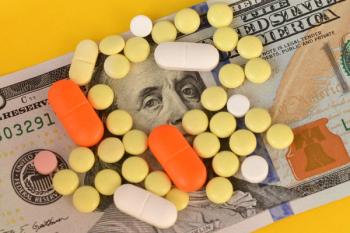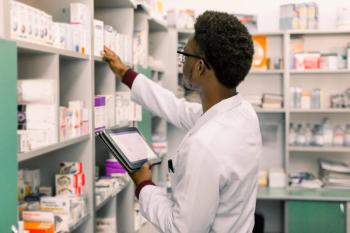
Perfect Storm: Pharmacy seeks shelter from Medicaid disaster
Still reeling from the economic havoc churned up by Medicare Part D's slower and lower reimbursements, pharmacy is bracing for the destruction swirling its way in the form of reimbursement cuts spawned by another monster storm named Medicaid.
Despite pharmacy's intense lobbying efforts to steer Congress away from massive cuts to Medicaid payments, the House of Representatives voted 216 to 214 on Feb. 1 to pass the Deficit Reduction Act of 2005 (DRA). The Senate had adopted the measure last December when Vice President Dick Cheney had to break a 50-50 deadlock. Among the $39 billion slashed by the DRA over the next five years was a $3.6 billion reduction in Medicaid reimbursement for generic drugs to be extracted solely from community pharmacy's bottom line.
Not satisfied with passage of the DRA reductions a few days earlier, the Bush Administration called for another $1.3 billion in Medicaid pharmacy reimbursement cuts when its $2.7 trillion budget for fiscal 2007 was announced in February. In defending his massive cuts, the President virtually accused pharmacists of cheating the Medicaid program. Needless to say, the profession did not take kindly to his harsh words, especially since community pharmacy was still in the midst of saving his Medicare Part D bacon.
The President's proposed Medicaid reduction, which would rise to $2.5 billion with the states' share, would be spread over 2007 to 2011. However, the Congressional budget committees and the committees with jurisdiction declared the proposed 2007 cuts to Medicaid dead-on-arrival.
Slated to kick in on New Year's Day, the Medicaid reduction already enacted in the DRA will come from a federal rejiggering of the reimbursement formula for generic drugs. The federal upper limits (FULs) will be figured based on a maximum of 250% of the average manufacturer price (AMP). The Health & Human Services Office of Inspector General (OIG) defines AMP as "the average unit price paid to the manufacturers by wholesalers for drugs distributed to the retail class of trade, minus customary prompt pay discounts."
The Bush Administration and Congress, in their collective wisdom, have devised a system that bears no relationship to what pharmacies actually pay for drugs, according to pharmacy leaders. The AMP relates to manufacturers and wholesalers, not to wholesalers and retail pharmacies. Nevertheless, AMP is being set as the basis for figuring Medicaid reimbursement-but only for generics.
"Pharmacies cannot buy at AMP because of its very definition," said Stephen Schondelmeyer, Pharm.D, Ph.D, professor, department of pharmaceutical care and health systems, and director of the PRIME Institute, University of Minnesota College of Pharmacy. "Remember AMP is a secret number. This is the government saying, 'Participate in our program and we'll pay you, but we can't tell you how much it is, so please keep participating.' Not many businessmen would take that deal in the private sector."
The DRA directed the HHS OIG to make recommendations to the HHS secretary about how to determine AMP by June 1 and specified that HHS should begin posting AMP data on a public Web site on July 1. But the Centers for Medicare & Medicaid Services has yet to issue any guidance on how AMP is to be calculated. As a result, drug manufacturers figure their AMP differently, based on different assumptions. Some include nursing home and mail-order sales data, which penalizes retail pharmacy by skewing prices lower.
Newsletter
Pharmacy practice is always changing. Stay ahead of the curve with the Drug Topics newsletter and get the latest drug information, industry trends, and patient care tips.





























































































































